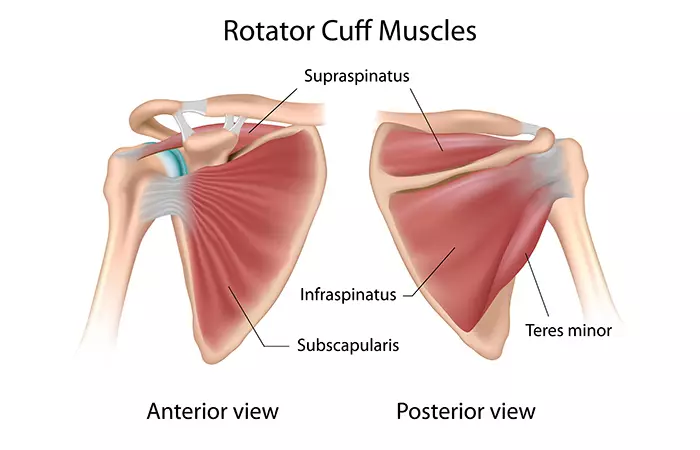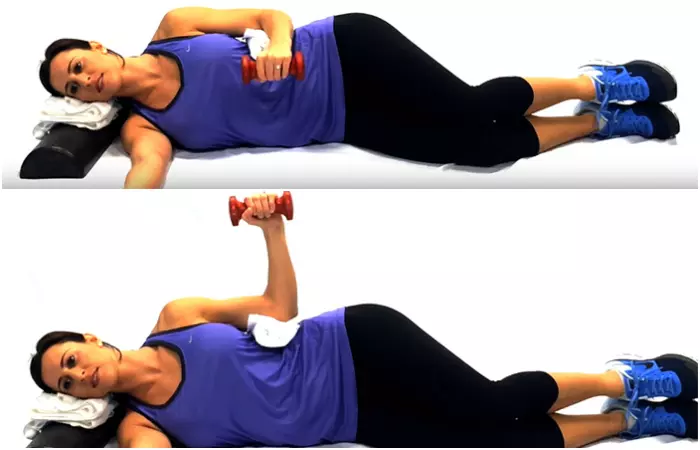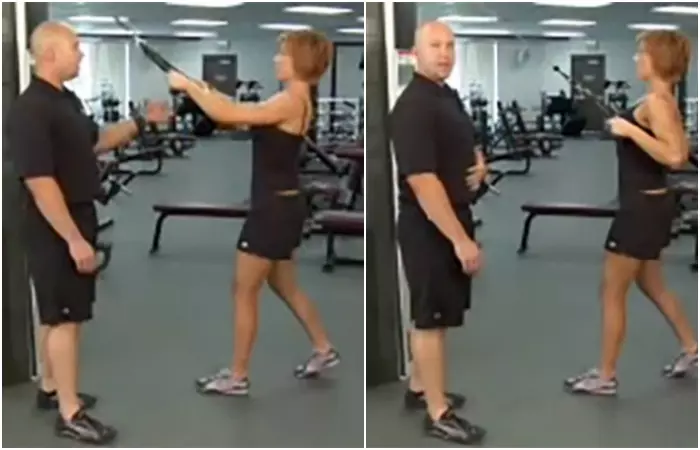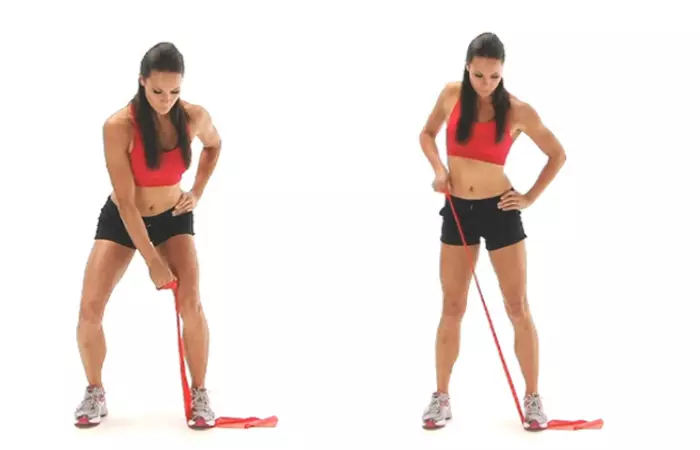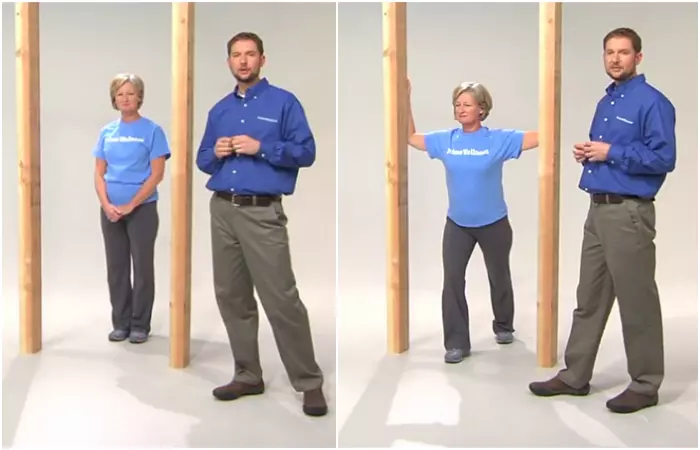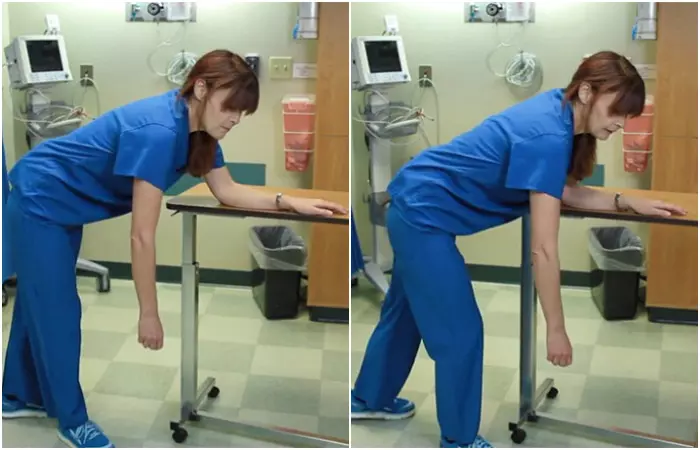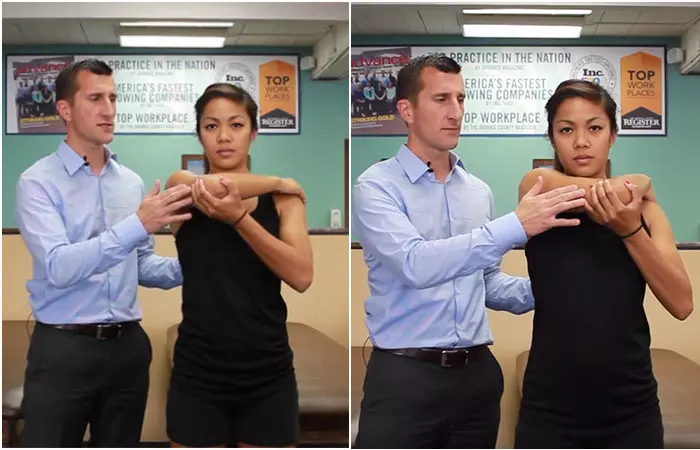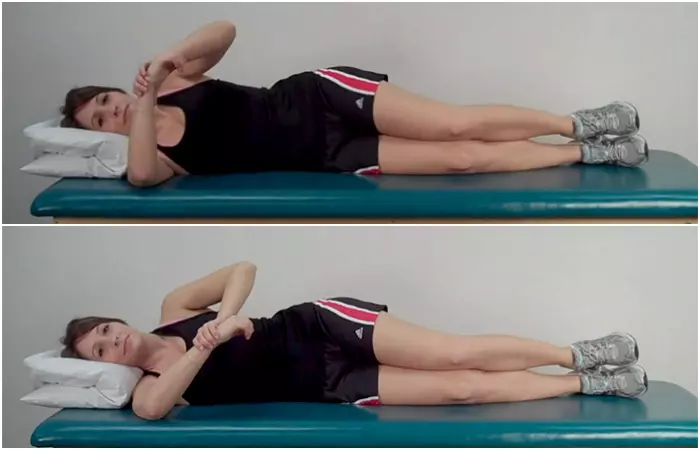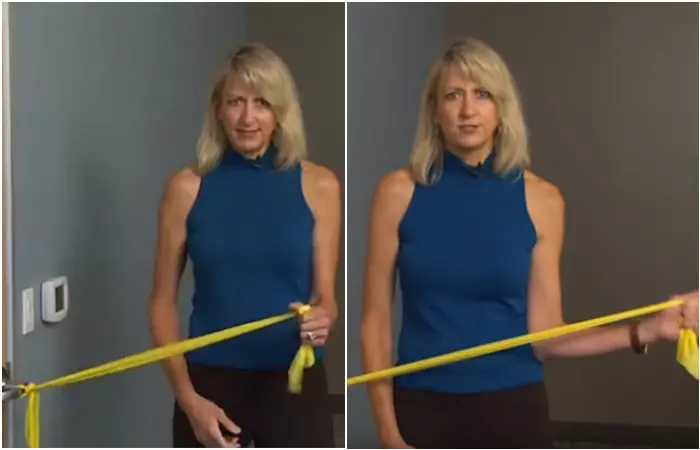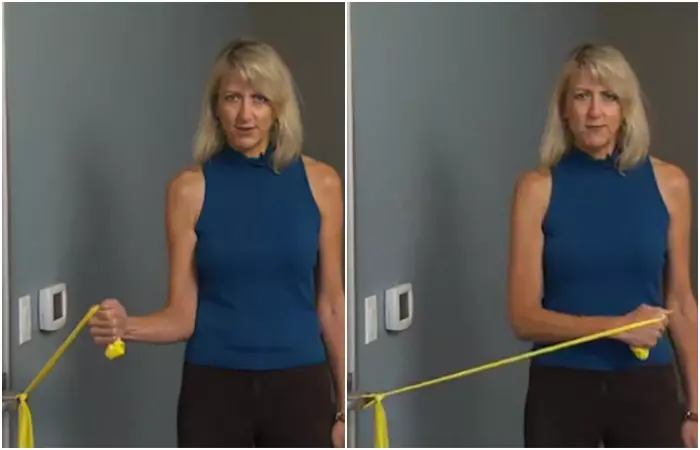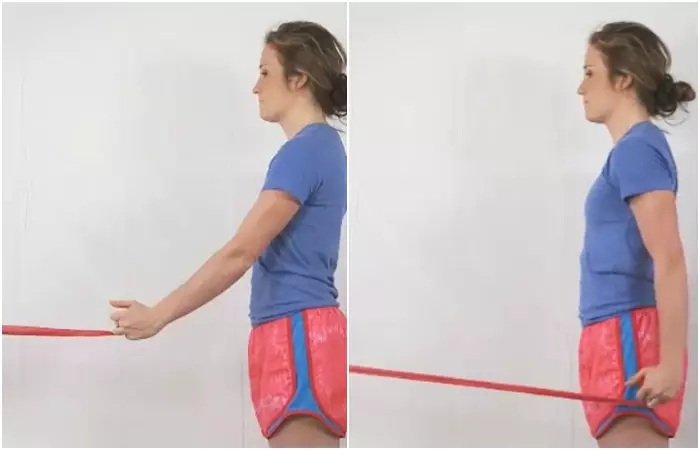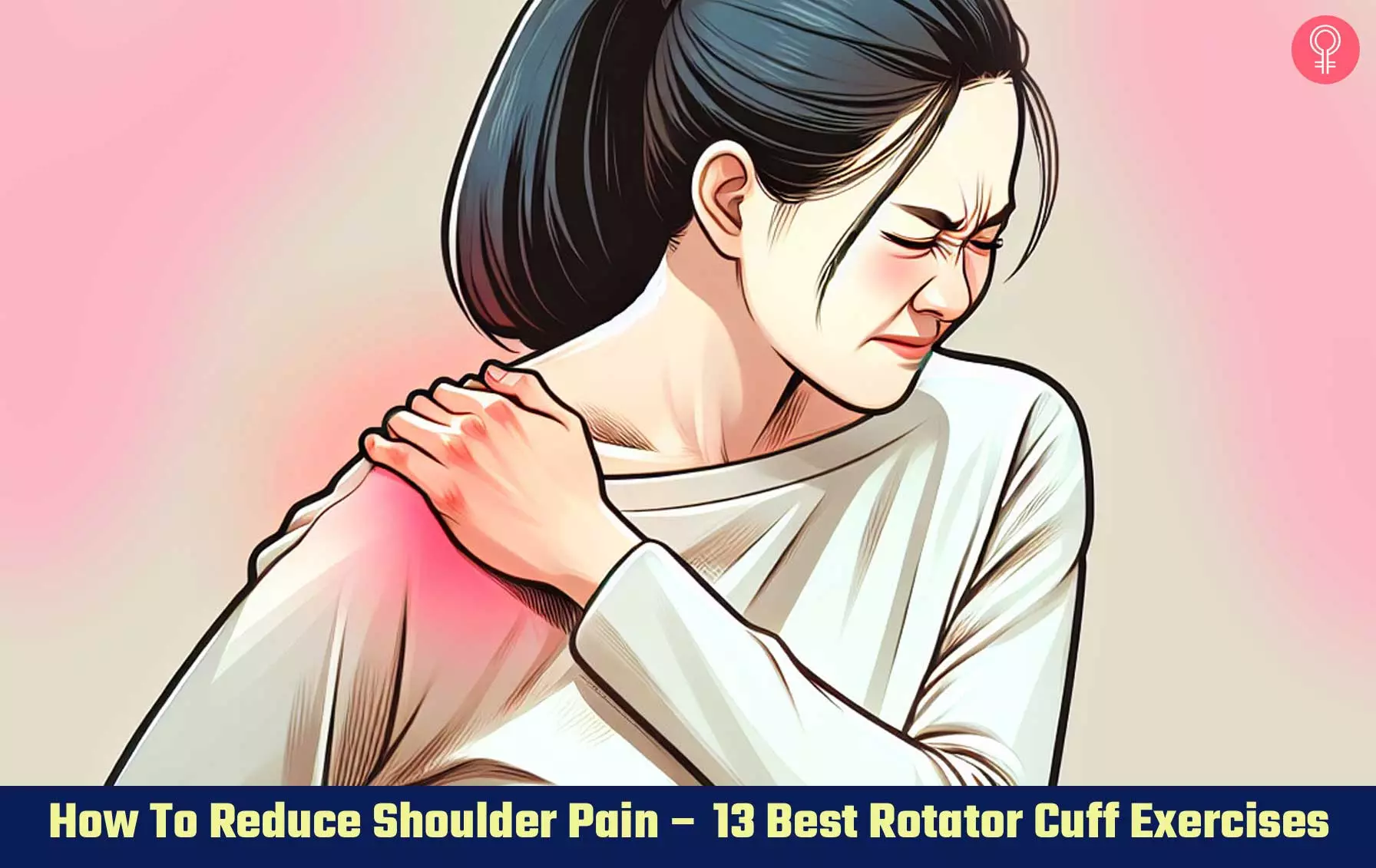Note: Take your doctor’s permission before doing these exercises.
What Are The Rotator Cuff Muscles?
Understanding shoulder anatomy is important for both injury prevention and enhancing shoulder mobility. The rotator cuff muscles are a group of four shoulder muscles that support the movements of your arms and shoulders. Also referred to as SITS, the four muscles of the rotator cuff are:
Supraspinatus Infraspinatus Teres Minor Subscapularis
These muscles help stabilize your shoulders and move them in, out, up, back, and down when your arms do various tasks. Without enough strength, balance, and stability in the rotator cuff, it would be impossible to lift your arms and do various movements freely. If you ever had a shoulder injury, you know that even lifting your hand can become extremely painful. So, what causes rotator cuff muscle weakness or pain? Find out in the next section.
What Causes Injury To The Rotator Cuff Muscles?
Injury and pain to the rotator cuff muscles are caused by weakness in the rotator cuff muscles combined with the overuse of your hands, arms, and shoulders – the muscles cannot support the movement of your limbs. Poor posture and incorrect form may also lead to irritation, inflammation, calcificationi An abnormal process of accumulation of calcium salts in the body tissues, causing them to harden. , degenerative thinning, and tendon tear in the area. A rotator cuff muscle injury can also occur due to aging. Here is a list of possible rotator cuff injuries:
Rotator Cuff Tears Rotator Cuff Tendinopathyi A broad term that includes all the painful conditions occurring in and around the tendons due to its overuse. Rotator Cuff Tendinitisi An inflammation or irritation of tendons (thick fibrous connective tissue) that attach muscles to bone. Shoulder Impingement Impingement Syndromei Shoulder pain caused by connective tissue due to inflammation from repetitive shoulder activities. Shoulder bursitis
When any of these four injuries occur, you may experience pain and other symptoms, such as:
Symptoms Of Rotator Cuff Injury
Trouble lifting your hands Trouble reaching behind your back Weakness of the shoulders Trouble bearing weight on your hands in a plank Difficulty sleeping on the side of the affected shoulder Crackling sensation while doing certain movements Increased shoulder pain at night
If you have any of these symptoms, you must check with your doctor immediately. Your doctor will ask about your daily activity routine, medical history, and age, do a physical examination, and may ask you to get an X-ray and/or MRI done. If a rotator cuff injury is confirmed, you may need to take NSAIDs (Non-Steroidal Anti-Inflammatory Drugs), physical therapy, or may require shoulder surgery if your injury is severe. Donna Westermeier, a YouTuber, shared her experience of recovery from a shoulder injury after she fell off the stairs. Initially, she took physical therapy for it and it helped. However, she adds, “After three months of physical therapy, the doctor felt that my strength wasn’t where it should be and so, ordered an MRI– and the MRI found a large partial tear in my rotator cuff tendon a supraspinatus, and a slap lesion as well (i).” She eventually had to undergo surgery to treat the condition. Post-surgery, the recovery will take place in four different stages:
First, your shoulder will be immobilized for 4-6 weeks so the surgical area can help. Second, you will do passive movement exercises for 4-6 weeks, where the physical therapist will stabilize your arm at a particular position and gently exercise the shoulder rotator cuff muscles without any effort from you. This will help regain the shoulder’s range of motion, flexibility, and shoulder stability. Third, you will perform active exercises for 3-6 weeks to further improve your range of motion, add strength, and increase flexibility. Fourth, you will perform strength training exercises for 8-12 weeks using resistance bands and light weights to strengthen the muscles.
In this post, we will talk about the shoulder strengthening exercises recommended in the third and fourth stages of recovery. You will learn about the various active shoulder exercises you may perform to heal rotator cuff muscles. Further, shoulder injuries can impact the glenoid labrum — a cartilage that stabilizes the shoulder joint. Hence, it is ideal to also consider shoulder labral tear exercises under the supervision of your physical therapist. Talk to your doctor and therapist before starting any of these exercises to boost your shoulder health. At any time, if you experience increased pain, stop immediately and seek medical attention. With these points in mind, let’s see which exercises are best for increasing strength, stability, and range of motion after a rotator cuff injury. Top exercises used by physiotherapists were statistically evaluated in a recent study published in Musculoskeletal Care to determine the most suggested exercise for treating rotator cuff injuries. Participants from various countries took part in the survey to help analyze which exercise is recommended the most by physiotherapists. The graph below shows resistance exercise as the most preferred recommendation, with motor control exercises coming in second.
Analysis Of Different Exercises Used In Rotator Cuff Injuries
13 Best Exercises To Strengthen The Rotator Cuff Muscles After Injury
1. Side-lying External Rotation
Target – External rotators How To Do Sets And Reps 3 sets of 8 reps in the initial stage. Increase the reps and sets as you progress.
2. High-To-Low Rows
Target – Rhomboidsi A collective group of muscles important for upper limb movement and the stability of shoulder muscles. , traps, and lats. How To Do Sets And Reps 3 sets of 12 reps
3. Reverse Fly
Target – Posterior deltoids, rhomboids, and traps. How To Do 3 sets of 8 res, 1 additional set with the injured side
4. Lawn Mower Pull
Target – Posterior deltoids, pectorals, lats, biceps, and hamstrings. How To Do Sets And Reps 3 sets of 12 reps for each arm
5. Doorway Stretch
Target – Subscapularis and pectoralis. How To Do Sets And Reps 3 sets of 12 reps Note: You may also relieve issues in the subscapularis with convenient at-home exercises and stretches for a frozen shoulder.
6. Pendulum
Target – Shoulder joints How To Do Sets And Reps 5 sets of 10 clockwise and 10 anticlockwise movements.
7. Crossover Arm Stretch-Low Rows
Target – Posterior deltoids, lats, and triceps. How To Do Sets And Reps 2 sets of 20-second holds – 10 repsets of 10 reps
8. Sleeper Stretch
Target – Posterior shoulder How To Do Sets And Reps 3 sets of 5 reps.
9. Shoulder External Rotation
Target – Teres minor, posterior deltoid, and infraspinatus. How To Do Sets And Reps 3 sets of 8 reps
10. Shoulder Internal Rotation
Target – Subscapularis, teres major, and lateral deltoids. How To Do Sets And Reps 3 sets of 8 reps
11. Resisted Shoulder Extension
Target – Teres major, lats, posterior deltoids, and triceps. How To Do Sets And Reps 3 sets of 8 reps
12. Shoulder Abduction Using A Resistance Band
Target – Deltoid and supraspinatus. How To Do Sets And Reps 3 sets of 10 reps
13. Scaption Raise (With Dumbbells)
Target – Trapezius, serratus anterior, deltoids, and rotator cuff How To Do Sets And Reps 3 sets of 12 reps It’s important to stretch your shoulder muscles as well as strengthen them so they don’t become overly tight. Keep reading for healthy shoulder stretches.
Illustration: How To Reduce Shoulder Pain – 13 Best Rotator Cuff Exercises
Can a rotator cuff tear heal on its own? A rotator cuff tear may not heal on its own without surgery. However, not all rotator cuff injuries need surgery and may heal with exercises and other treatment methods. What exercises should you avoid with a rotator cuff injury? Squats with bars, deadlifts, swimming and exercises that put force on the shoulders and have a pulling effect on the arms should be avoided if you have a rotator cuff injury. Do push ups help rotator cuff? Deep push-ups should be avoided with a rotator cuff injury. However half push-ups and wall-pushps may help strengthen the rotator cuff when done properly and under supervision. Is ice or heat better for rotator cuff pain? Ice is better early on for rotator cuff pain as it may help reduce the inflammation. Heat may be used on injuries that linger beyond 6 weeks and may help loosen up tightened muscles. Learn the 10 best rotator cuff exercises that can help strengthen and stabilize your shoulder. Check out this video to prevent injuries and improve overall shoulder function.
